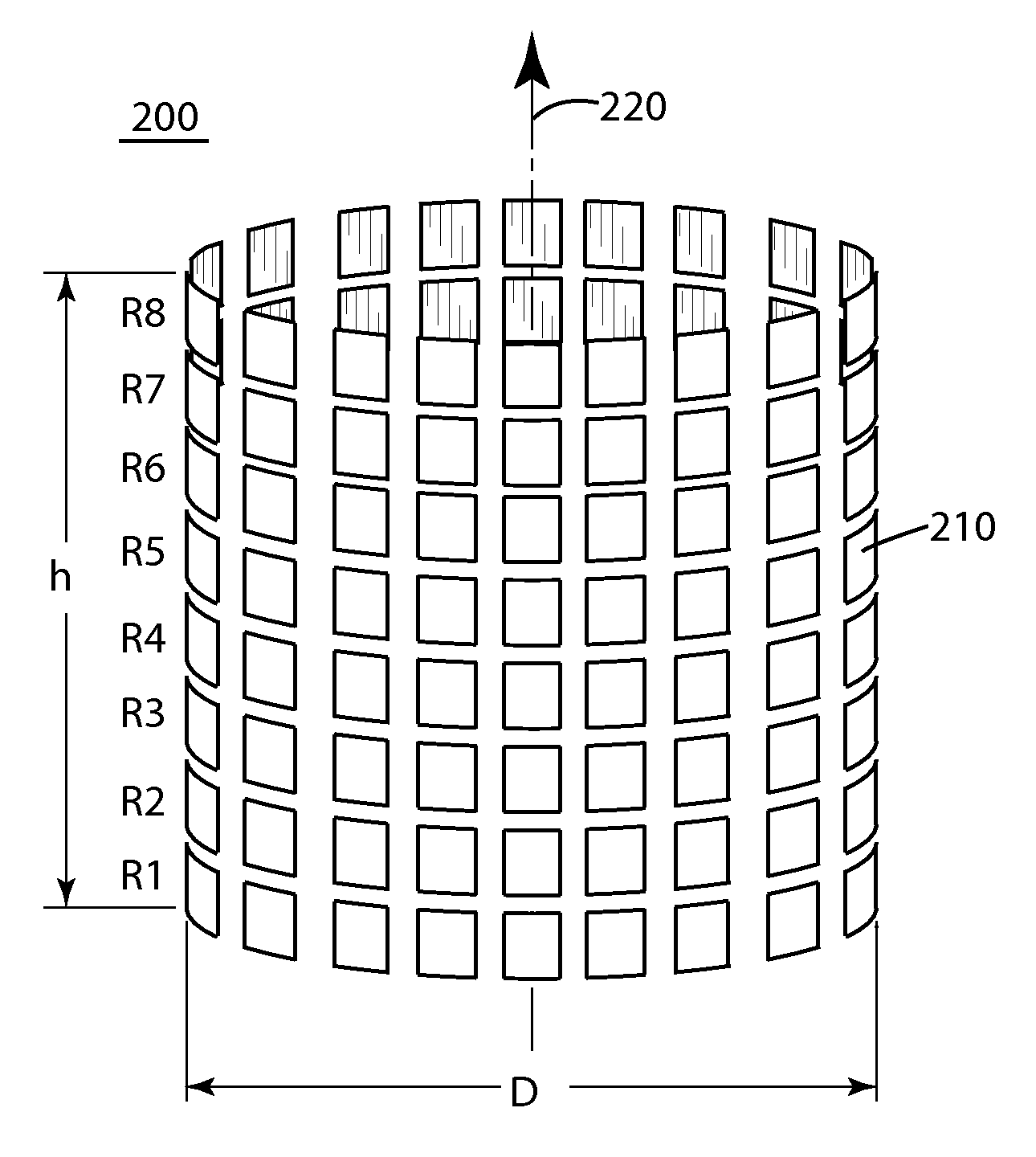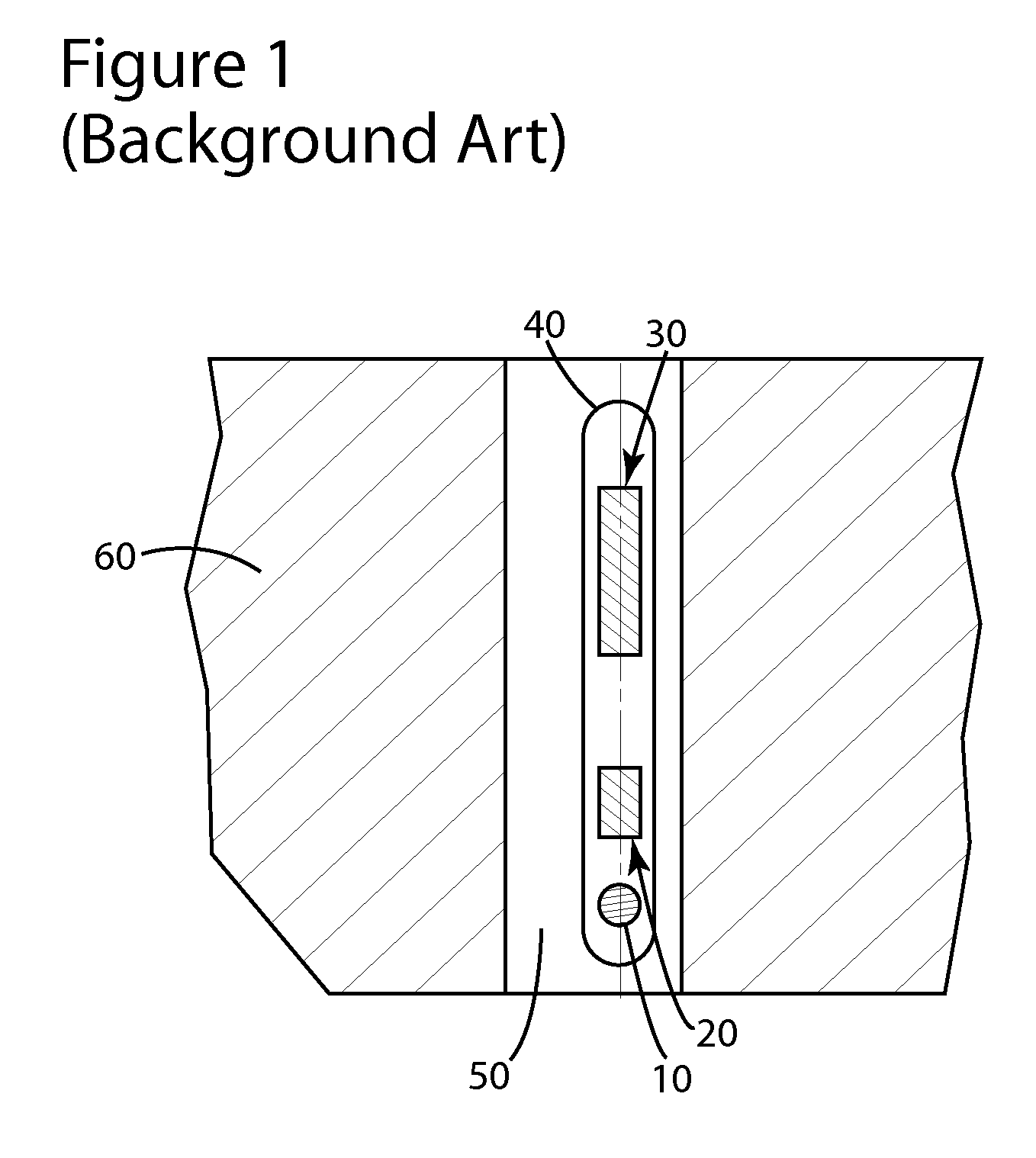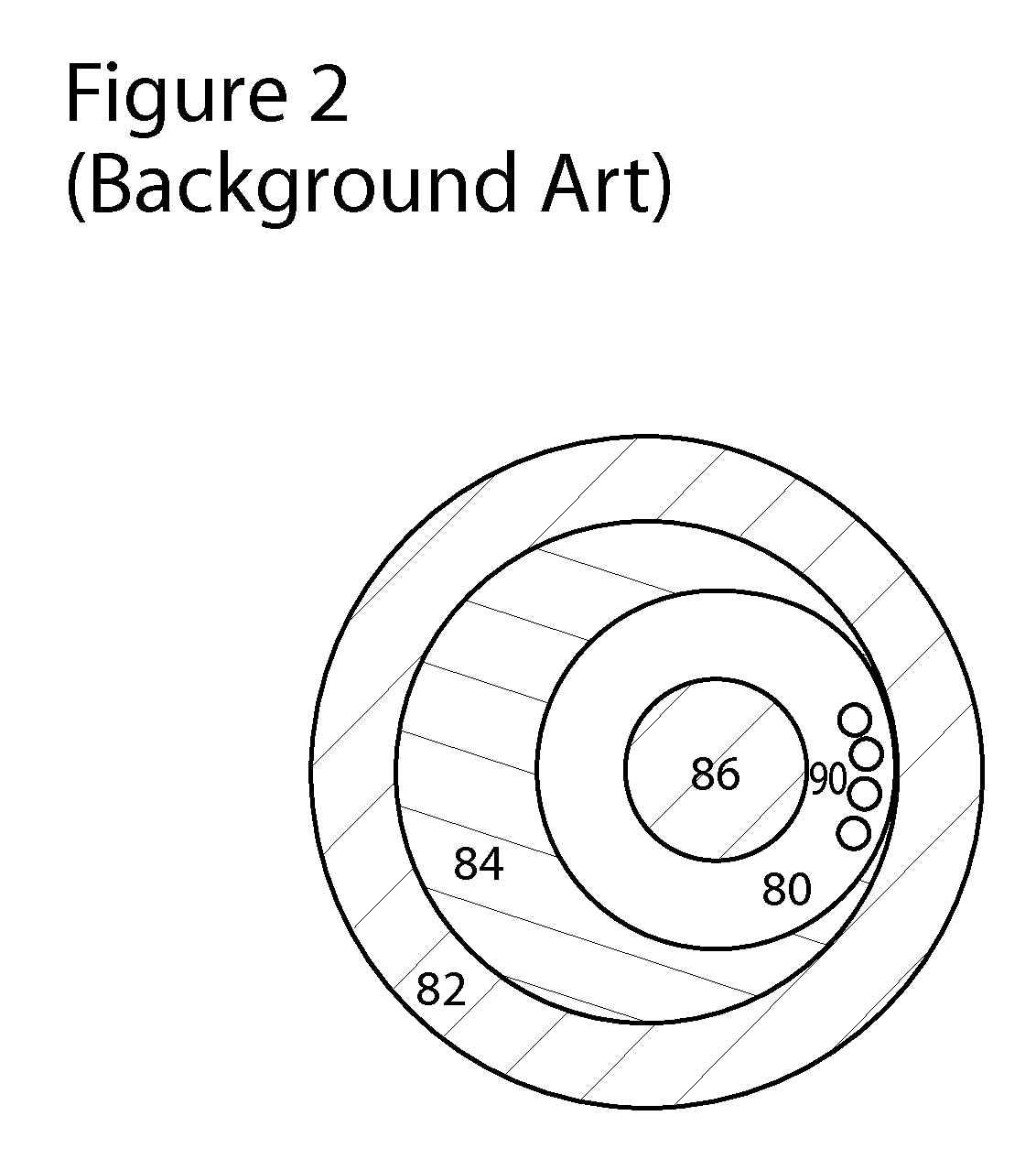Neutron porosity measurement devices with semiconductor neutron detection cells and methods
a neutron detection cell and neutron porosity technology, which is applied in the measurement of semiconductor devices, nuclear radiation detection, instruments, etc., can solve the problems of affecting the associated detector electronics, increasing the cost of the detector and the high voltage required to operate, and reducing the energy resolution of lithium-glass detectors at room temperatur
- Summary
- Abstract
- Description
- Claims
- Application Information
AI Technical Summary
Benefits of technology
Problems solved by technology
Method used
Image
Examples
Embodiment Construction
[0030]The following description of the exemplary embodiments refers to the accompanying drawings. The same reference numbers in different drawings identify the same or similar elements. The following detailed description does not limit the invention. Instead, the scope of the invention is defined by the appended claims. The following embodiments are discussed, for simplicity, with regard to the terminology and structure of neutron detection tools used for measuring the porosity of soil formations in oil and gas industry. However, the embodiments to be discussed next are not limited to these systems, but may be applied to other systems that require neutron detection in the context of scarcity of 3He.
[0031]Reference throughout the specification to “one embodiment” or “an embodiment” means that a particular feature, structure, or characteristic described in connection with an embodiment is included in at least one embodiment of the subject matter disclosed. Thus, the appearance of the ...
PUM
 Login to View More
Login to View More Abstract
Description
Claims
Application Information
 Login to View More
Login to View More - R&D
- Intellectual Property
- Life Sciences
- Materials
- Tech Scout
- Unparalleled Data Quality
- Higher Quality Content
- 60% Fewer Hallucinations
Browse by: Latest US Patents, China's latest patents, Technical Efficacy Thesaurus, Application Domain, Technology Topic, Popular Technical Reports.
© 2025 PatSnap. All rights reserved.Legal|Privacy policy|Modern Slavery Act Transparency Statement|Sitemap|About US| Contact US: help@patsnap.com



